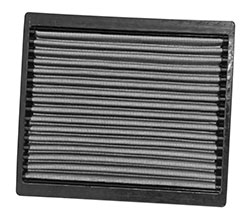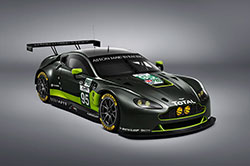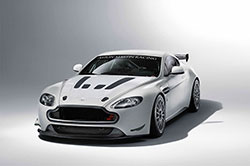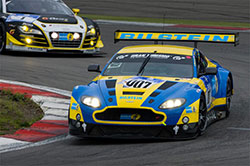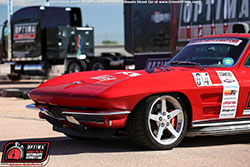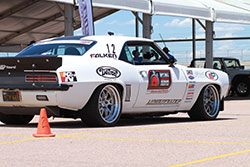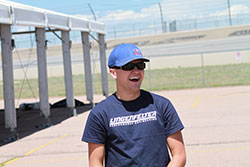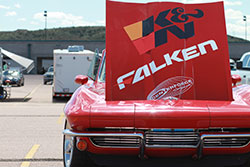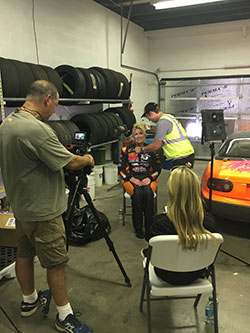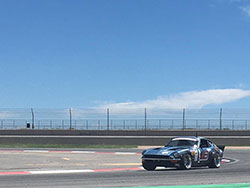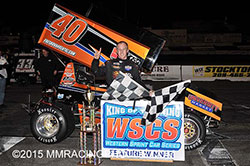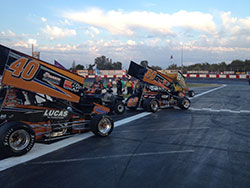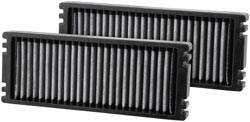
Eighty percent of new trucks built today have cabin filters, including the Nissan midsize Pathfinder, Frontier, Xterra and Navara, all of which can use the K&N VF1001.
|
You've got work to do, deadlines to meet, stuff to be moved, commutes to complete. Ask a busy man who just hopped out of his Silverado 1500 if it has a truck cabin air filter and he may shrug, saying he has no idea. Ask a mom with four teens in her Yukon Denali if she has had the cabin filter serviced this year, and she may ask if that is the same as an air conditioning filter.
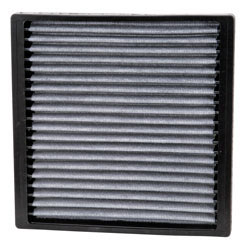
Many truck cabin air filters are located behind the glove box, as is the VF2005, which fits the Toyota Tacoma.
|
Who knows if your truck has a cabin air filter? Do you have time to care? And should you? In a single word: yes.
Air pollution is a health issue for the world, and will be forever. As nations around the globe tackle their individual air quality issues, truck cabin filters are a first line of defense against what is still out there. They help everyone, not only asthma and allergy sufferers, the very young and the elderly. They also help keep your truck's ventilation and air conditioning system healthy by providing a clean, unrestricted flow of air.
Does your truck have a cabin filter?
Consult your owner's manual, visit the manufacturer's website, or ask your dealer if your truck has a cabin filter. More than 80 percent of vehicles built today will have an air conditioning filter. They all work, but some work better than others.
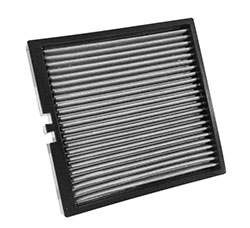
All K&N truck cabin air filters, exemplified by the VF2044 for the Chevrolet Silverado and GMC Yukon Denali, are constructed out of a special non-woven synthetic material, supported by wire mesh, offering greater filter surface area and sturdiness for regular cleanings.
|
Truck cabin air filter location will vary by vehicle year, make, and model but is generally installed in one of three places. Most often a cabin filter can be found under the hood near the windshield, underneath the dashboard, or behind the glove box.
It's OK that you may be unaware of this relatively new addition to your truck's cabin air intake system. Cabin air filters have gradually become standard OEM equipment since the turn of the 21st century, so they are a modern convenience that also has health benefits and are simple to maintain by replacing them. Most cabin air filters can be replaced without tools but some require basic hand tools to open the cabin air filter compartment.
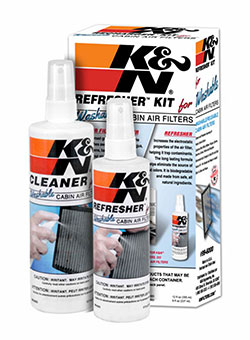
For a successful cleaning of your K&N truck cabin air filter, use the 99-600 Refresher Kit and let the filter dry completely before spraying with the refresher spray.
|
Discarding and installing a new one is easy, but they just choke the landfills. K&N has facilitated a greener approach to maintenance since 2014, offering a thrifty replacement truck cabin air filter that is washable and reusable, such as the K&N VF2044 for the Yukon Denali and Silverado, or the VF2005 for the Toyota Tacoma. So let's find out about cabin filters.
What are truck cabin air filters and how do they work?
Cabin air filters were first actively developed in the late 1980s in Europe and Japan, initially out of concern for protecting sensitive drivers and passengers from inhaling pollen and dust. This concern quickly expanded to the need for protecting us all against air contaminated with diesel soot and gaseous substances in metropolitan areas with lots of, um, truck traffic (plus uncombusted industrial smogs) that release hydrocarbons, sulphur dioxide, nitrous oxides, hydrogen sulfide, ammonia, and benzene, to name the headliners of the pollutant short list.
ISO (International Organization for Standardization) testing and manufacturing standards were drafted in 1994 and updated in 2001 for particulate and odor-reducing functions of cabin filters. The filters K&N produces traps particles and helps to reduce odors. Examples are the K&N VF1001 for Nissan Frontier and Pathfinder and the VF3012 for the Jeep Grand Cherokee and Dodge Durango.
Many stock cabin air filters are thick, folded paper or some combination of paper and fibers. They are a physical barrier to trap dust, pollen, leaves and other debris and reduce the flow of chemically contaminated air that makes it into the ventilation and air conditioning system. The particles sit on the surface of the filter and eventually build up, forming their own layer, and reducing the incoming flow of air. To keep the air clean in the cabin, these filters are intended to be discarded at least annually.
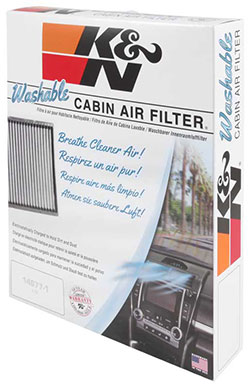
K&N introduced the washable, reusable cabin air filter in 2014 and is designing new ones every day.
|
K&N truck cabin air filters are a single layer of thermally bonded nonwoven synthetic material held in a fan-fold shape, surrounded by molded urethane frame with wire screening. The filter itself has been electrostatically charged to attract and hold dirt. As air flows through the K&N cabin air filter, dirt and allergen particles become trapped in the synthetic fibers, and the electrostatic charge helps hold them in place. This design allows for increased airflow, even as the filter gets dirty. The construction of the K&N cabin filter is intended to allow it to be removed, washed, recharged, and reused, as often as needed, over the lifetime of the truck.
The K&N washable cabin air filter is the first of its kind. Watch the K&N washable cabin air filters overview video for more information on how cabin air filters work.
Why do truck cabin filters need maintenance?
It may be a worn old saying, but "an ounce of prevention is worth a pound of cure" is as relevant to vehicle health and safety as it is to personal wellness. Just as you change the oil and refresh the fluids in the engine, the rest of the truck's systems need regular check-ups and cleanings. The concept is not exactly "if it ain't broke, don't fix it", but following a preventive routine keeps parts from wearing or breaking, and keeps the truck on the road longer.
Besides creating an uncomfortable environment for occupants by no longer trapping dust, fungus, spores, and bacteria, a clogged truck cabin air filter can also contribute to moldy odors and mildew in the cabin, and put a strain on the heating and air conditioning systems. This is a great reason to perhaps coordinate cabin filter changes with annual or semi-annual A/C check-ups.
You can simply remove, discard, and replace the OEM cabin filter with the same stock version, purchased from the dealer at dealership prices. Or, you can invest in a K&N cabin air filter that is washable, reusable, and guaranteed with a 10-Year/Million Mile Limited Warranty.
K&N cabin air filters are engineered to meet factory filtration requirements, do not void new vehicle warranties, and are designed to fit precisely into the stock cabin filter compartment. Detailed installation instruction sheets are included with each filter and installation videos are often provided on the specific product web page for the filter that matches your vehicle.
Cleaning your K&N washable cabin air filter works best if you use of the 99-6000 K&N refresher kit and follow these simple steps:
- Remove the filter from your vehicle
- Spray the cabin filter cleaner onto the filter
- Rinse the filter with water to remove all dirt
- Air-dry naturally for 20-30 minutes
- Apply K&N cabin air filter Refresher™ to the filter media
- Re-install the filter back into your vehicle
The keys to a successful service are thoroughly rinsing the cabin filter, letting it dry completely, and using K&N’s Refresher spray. The spray maintains the electrostatic charge so the filter can continue to help capture many types of mold, mildew, spores, fungus, bacteria, and germs while helping to control odors.
K&N has a washable, reusable truck cabin air filter for your truck or SUV
Ready to try a K&N cabin filter in your truck or SUV? Visit the K&N website and please use the K&N search by vehicle tool. New cabin air filters are being developed all the time, and if K&N does not currently offer a filter for your vehicle, you can personally request that K&N makes one using the online product request form.
K&N truck cabin air filters are designed to last for years of use and are guaranteed by the K&N 10-Year/Million Mile Limited Warranty.
|

